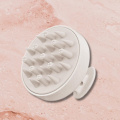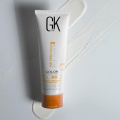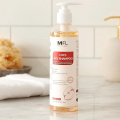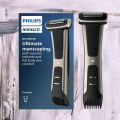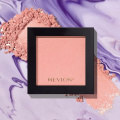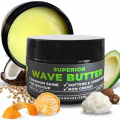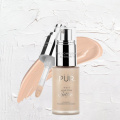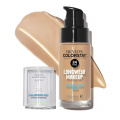What is dermaplaning? The results, side effects, and cost
One method of removing facial hair, dermaplaning essentially shaving the fuzz off the face has become more commonplace. Dermaplaning is one of the easiest ways of removing unwanted hair from the face.
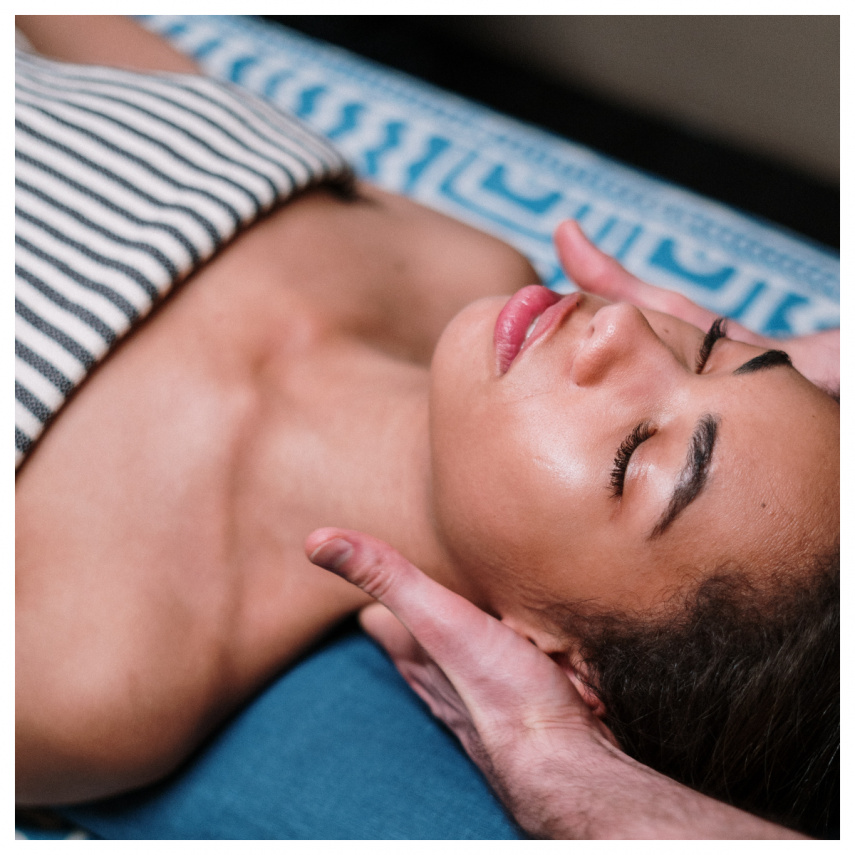
You've probably already discovered the beautiful realm of dermaplaning, the skincare procedure where a physician or aesthetician gently exfoliates your face with a scalpel if you routinely go down a beauty TikTok rabbit hole as I do. Dermaplaning is highly safe and effective in removing dead skin cells and peach fuzz to leave dull skin looking brighter and softer, even though it sounds harsh and frightening and you are correct to be cautious of any treatment involving a blade.
But listen, we're still talking about putting a blade against your dermaplaning face, so let's first address some very crucial concerns about dermaplaning, such as what to anticipate, how it feels, and, of course, how much it costs. To give you all the information you need before you schedule your first visit, I spoke with a few specialists. Let's get started.
What does dermaplaning do to your skin?

By using a scalpel to remove the top layer of dead skin cells, peach fuzz, and excess oils, dermaplaning gives you somewhat brighter, smoother skin. The effects of the thorough exfoliation treatment persist for around three weeks and can remove up to two weeks' worth of dead skin.
In addition to assisting you in achieving extremely soft skin, dermaplaning also evens out uneven skin structure and provides you with a smoother base for your foundation and cosmetics (because it serves as a method of removing dermaplaning facial hair), so you can say goodbye to cakey makeup.
Dermaplaning, according to dermatologist Mona Gohara, MD, an associate clinical professor at Yale University School of Medicine, "is like a turbo-charged exfoliant." So even if you frequently exfoliate at home, according to Dr. Gohara, it's still a good treatment for whatever your usual exfoliants can't get rid of.
What are the dermaplaning benefits?
It can remove peach fuzz

The primary motivation for doing it is to get rid of the vellus hairs on their faces, also known as peach fuzz by others. Everybody has these little vellus hairs covering their bodies, and they have a purpose: Vellus hairs protect the skin and keep us warm. But because some individuals' vellus hairs are denser and/or darker than others and hence more noticeable, some people may decide to have them removed.
Dermaplaning can remove peach fuzz, which can make skin appear and feel more refreshed and make makeup apply much more smoothly. In other words, your face will likely glow and be baby smooth. Dermaplaning is just one method of doing it. Many at-home hair removal kits are available, and they might work.
However, conventional hair removal techniques like waxing and threading don't always deliver the results people are looking for (especially in terms of exfoliating and removing finer hairs), according to board-certified dermatologist Rosemarie Ingleton, MD, who makes dermaplaning an appealing alternative. It's technically untrue what you may have heard about shaving your face leaving thicker hair growing back.
According to the Mayo Clinic, however, shaving might result in hairs having a blunter tip when they grow out, making them appear thicker or darker. But according to Dr. Shipp, after a precise scalpel-assisted in-office dermaplaning procedure, the hair normally doesn't grow back thicker or darker.
For longer-lasting results, Jeanine Downie, MD, a board-certified dermatologist with a practice in New Jersey, advises people to undergo laser hair removal. But keep in mind that hair can still regrow using this technique, it usually requires several sessions to see results, each session costs between $300 and $400, and people with darker skin are typically more vulnerable to hyperpigmentation (dark spots) and burning after laser hair removal than those with lighter skin.
Exfoliate your skin

Although removing vellus hairs is the primary goal of dermaplaning, according to Dr. Ingelton, the stratum corneum, a thin layer of dead skin, is also removed by the blade. Your skin will appear more radiant, your skin care products will absorb better, and your foundation will apply more smoothly as a result.
To jump-start and exfoliate the top layer of dead skin cells before additional treatments like microdermabrasion or lasers like Fraxel, dermaplaning is frequently performed as an add-on in Dr. Ingleton's practice.
According to Dr. Kim, there are no studies comparing dermaplaning to other exfoliation procedures like retinoids or chemical peels.
Because of this, Dr. Downie doesn't provide dermaplaning in her practice and prefers to employ peels instead, especially on patients with sensitive skin. Peels can aid with fine wrinkles, acne, and skin tone, according to her. "They are not comparable in any way, and many peels exfoliate the skin more deeply than a scalpel."
Is dermaplaning just shaving?

While there are many similarities between dermaplaning and shaving your face, the main distinction is that dermaplaning, again when done by a qualified professional, delivers a more thorough exfoliation, whereas shaving your face at home is a more convenient, do-it-yourself option that primarily targets peach fuzz. However, other dermatologists, including Dr. Gohara, suggest never using it. Sharp blades and DIY projects shouldn't mix, she claims.
However, you can attempt carefully shaving your face at home if you're just seeking to get rid of some peach fuzz, your skin isn't particularly sensitive, and you're okay with disobeying a dermatologist's advice. Just make sure the dermaplane razor you're using is brand-new, fresh, and made exclusively for your face (the blades may need to be replaced after one or two usages, so it's wise to buy a pack).
However, you can attempt carefully shaving your face at home if you're just seeking to get rid of some peach fuzz, your skin isn't particularly sensitive, and you're okay with disobeying a dermatologist's advice. Just make sure the dermaplane razor you're using is brand-new, fresh, and made exclusively for your face (the blades may need to be replaced after one or two usages, so it's wise to buy a pack).
What are the side effects of dermaplaning?

According to Dr. Doft, dermaplaning is risk-free for most skin types when performed by a qualified professional, particularly for people with sun damage, fine lines, dry patches, and dull skin. However, there are always exceptions: If you have extremely sensitive, reactive skin (such as individuals who have rosacea or keratosis pilaris), you might want to avoid dermaplaning because it could irritate your skin.
The same is true for everyone who has inflamed acne; as is obvious, rubbing a sharp scalpel over your pimples can aggravate them and make previous breakouts worse by transferring bacteria. But don't panic, according to Dr. Gohara, there are still effective techniques to exfoliate your skin if you have acne. Simply discuss which exfoliants are the best, most gentle for you, and your skin concerns with your dermatologist (lactic or polyhydroxy acid are both common choices).
Will dermaplaning break me out?

Dermaplaning shouldn't result in more breakouts, even if you shouldn't do it while you have active pimples. Dermaplaning may help prevent some future breakouts by clearing the surface of your pores of the buildup of dead skin cells and extra skin oils. However, as I previously stated, you must forego this treatment if you currently have a breakout (though your dermatologist will make the final determination if you're unsure).
What to expect after dermaplaning benefits?

Although it's frightening to imagine a blade moving over your face, it doesn't truly hurt. Consider shaving it like you would any other part of your body. Do you perceive it? Yes. Is it painful? Not if you do it correctly. Again, this is why it's crucial to leave dermaplaning to experts. You might experience some small dermaplaning facial redness right after the operation, although this is not usually the case, and if it is, it will go away shortly.
Making an appointment during lunch and returning to the office immediately after the 40-minute treatment are both acceptable, according to Deveny. You'll mainly only need to restrain yourself from stroking your incredibly soft face. As a reminder, the results will last for two to three weeks, depending on how fast your hair grows.
What should I not do after dermaplaning?

For three days, try to limit your time in the sun and cover your dermaplaning face with sunscreen (which you already do, right?). You are still losing a very thin layer of skin, so even though the procedure is quite light and painless, your skin will be more sensitive to the sun and more vulnerable to UV damage. Therefore, bring sunscreen for sensitive skin (I recommend a mineral sunscreen) that has at least SPF 30, and reapply it every two hours, unless you're having dermaplaning done after dark. Then, just carry on with your life while savoring your bright little face.
How easily your makeup will apply to your face after dermaplaning is one of the main dermaplaning benefits of this procedure. Have you ever noticed that peach fuzz appears to stand out even more under face powder and foundation? Since dermaplaning gets rid of all the dermaplaning facial hair on your face, your makeup will apply quite easily. But hold on, despite the temptation to cover your face with makeup right soon after your dermaplaning procedure to witness the effects, resist this urge.
According to Dr. Doft, "I love to let the skin breathe for the remainder of the day." If you must wear makeup, you may do so, but be aware that doing so may make your skin more inflamed. Apply as much foundation as you like once your skin has had a day or so to settle (around). Additionally, Dr. Doft advises applying a rich hyaluronic acid mask or moisturizer to help keep your skin incredibly moisturized and happy after dermaplaning because your skin barrier will be more sensitive.
When should you avoid dermaplaning?

Consider your options carefully before scheduling a dermaplaning facial or other dermaplaning procedure in a few specific situations. For starters, Dr. Rossi advises against dermaplaning if you have active acne, rosacea, psoriasis, or eczema flare-ups because the procedure may aggravate the condition and result in extensive skin peeling. Dr. Downie adds that there's a potential the blade could nick a pimple, in which case healing time would be prolonged.
Additionally, let your dermatologist know if you've ever had cold sores. According to Dr. Downie, if you break out in cold sores, you should be taking an antiviral drug and the doctor should stay away from the affected area. Microtears in the skin allow cold sores to spread even without medicine.
In conclusion, seeking the advice of a dermatologist can help to assure the safest dermaplaning procedure—and the greatest, most radiant results.
Does dermaplaning cause stubble?

Contrary to what you have been told, shaving and dermaplaning will not cause "stubble" or cause your hair to grow back thicker or darker. According to Deveny, when your hair starts to grow back, it may feel somewhat different due to the angle at which the hair was removed, but it is the same thickness and texture as before, and it will continue to grow at the same rate as before.
How much does dermaplaning cost?

You should budget $150 to $250 for each session, and be aware that insurance frequently does not cover it. One significant benefit is that you'll notice a difference in the texture and tone of your skin right away. And just like with other cosmetic procedures, the cost will entirely depend on where you live.
How often should you dermaplane your face?

Although some patients with sensitive skin may choose to limit their treatments to once a season, Dr. Doft advises waiting at least a month between consultations because this is a profoundly exfoliating procedure. The precise timing will differ from person to person, so discuss the frequency that will work best for you with a dermatologist (either in person or via a virtual derm session).
Dermaplaning is a relatively low-risk method of exfoliating your skin and shaving off your dermaplaning facial hair as long as your skin isn't overly sensitive and you aren't having any significant breakouts. Remember: Dermaplaning can't be done at home; you must consult a professional. If all you want to do is get rid of peach fuzz, shaving might be a better option.
ALSO READ: 7 Hydrating face masks under $50 to boost your skincare routine





 JOIN OUR WHATSAPP CHANNEL
JOIN OUR WHATSAPP CHANNEL




































